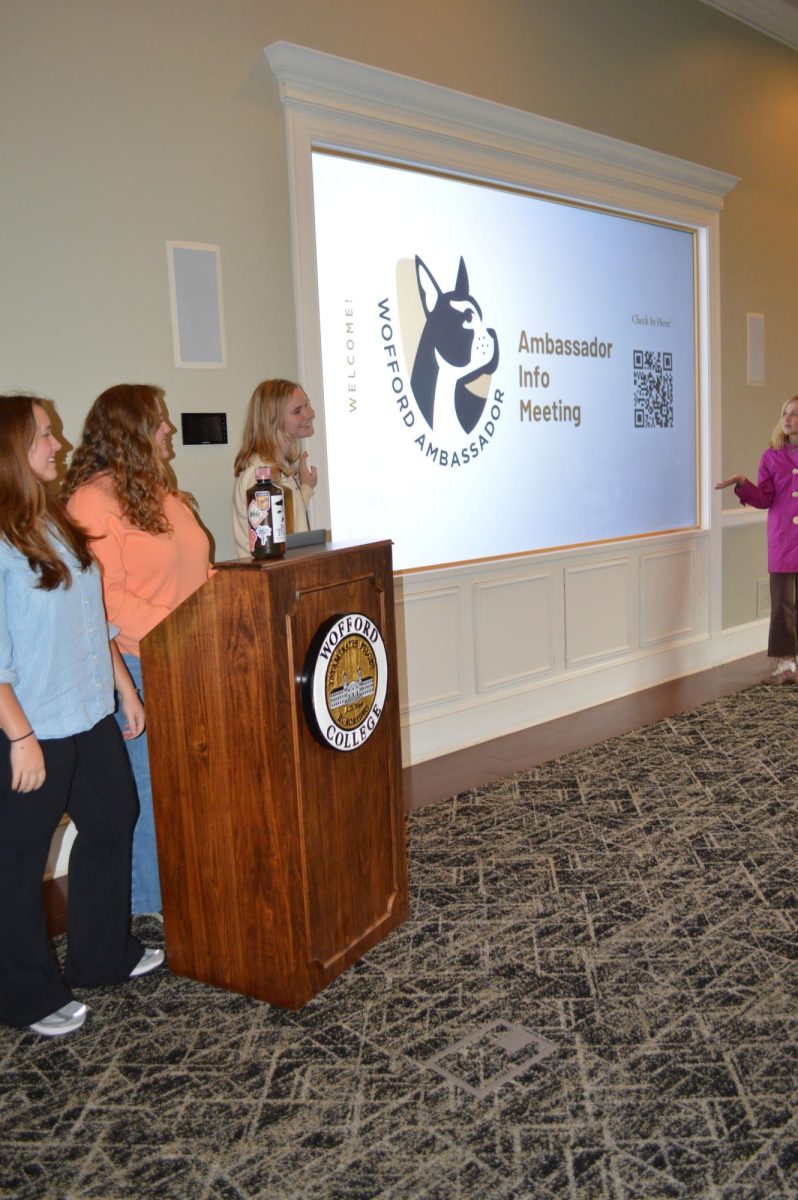Bemoaned campus internet struggles as online, hybrid classes ramp up
“Few things are certain in life, except death and taxes.”
To the average Wofford student, this commonly used, age-old maxim may seem largely true, but an extension of said certainty may be granted to the Terrier network’s marvelous ability to fail when it is most needed. In times gone by, this has mostly cropped up as an inconvenience; grainy video quality or spontaneous network disconnection. However, as of late, this issue has begun to shift from that pertaining to a want to that of a need.
With many classes being moved to a hybrid model–mixed online and in-person–or fully online, the necessity of a solid internet connection has become paramount. I corresponded via email with Kay Foster from the IT department in hopes of gathering some specific information. Some might chalk the heightened congestion up to Zoom classes overflowing the system, but while she granted that the increase in bandwidth usage to start the fall semester may be more than previous years–there is always an incremental increase year-to-year–it has not been to the dramatic extent some might think. Ms. Foster offered some explanation as to what exactly goes on when students try to access Zoom or any other online activities:
“The Wofford campus computer network consists of more than 1000 individual devices like switches, routers, wireless access points, controllers, firewalls, and miles of underground fiber optic cable. The network provides connectivity to almost 10,000 devices every day-computers, phones, tablets, servers, printers, security devices, environmental control devices, audio-visual equipment. It’s a complex system! Your internet data flows through many different devices inside our campus network before it reaches the actual internet. The actual campus internet connection is a relatively small part of the overall network that is shared by all devices connected to the campus network. It’s a collection of half a dozen or so devices that data flow through to and from our internet connections. We maintain connections to two internet service providers, which provides us internet redundancy, and they provide us several Gigabits of bandwidth each.”
Ms. Foster informed me that the college upgrades and replaces different parts of the system at different times, and while some devices related to internet connection have been updated in the last three years, the campus wi-fi equipment was most recently replaced in 2014, although the goal is to update it within the next 12 months. Foster explained that the internet service provider contracts usually expire every three years or so, and upon renewal bandwidth is increased in capacity. Contract negotiations are underway as the current ones expire in 2021.
Although she acknowledged that working at a small college has its challenges, such as limited resources in some areas, Ms. Foster assured me that in her 20+ years working in the IT department,–over 15 of which have been as Director of Network Services–the college has provided them with adequate and strategic funding. Having overseen the installation of the original network in 1999, she believes that the college has received ample return on the millions of dollars it has invested over the years.
The fact that many classes are being held over Zoom would seem to explain the lagging internet performance, but it may not be that simple.
“We always see a significant increase in internet bandwidth usage at the beginning of the fall semester as compared to usage seen during the summer months and holidays” wrote Ms. Foster. “This semester is no different in that respect. We typically see an incremental increase in overall internet bandwidth usage from one year to the next, which corresponds to a slight increase in the number of students and staff and total connected devices. This year that increase may be slightly more than we usually see, but it has not been a dramatic increase.”
The internet connection from the college itself may not be to blame all the time; Ms. Foster remarked that there are many contributing factors for subpar wi-fi performance, and that many of the reports and complaints from students could be attributed to the wi-fi equipment in specific residence halls,
“Since students returned to campus a few weeks ago, we have identified a problem affecting our internet connection that causes some intermittent slowness. These slowing events are short lived-in the range of 15 minutes each-occurring once or twice every other day or so. We have made changes on our network to successfully minimize the frequency, duration, and severity of these events and they are not generally service affecting. We hope to have this problem resolved in the next few days.”



























